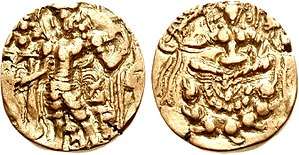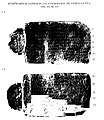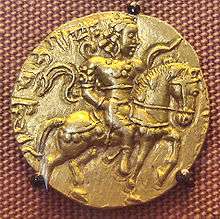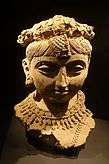Vishnugupta (Gupta Empire)
Vishnugupta Candraditya (Gupta script: ![]()
![]()
![]()
![]()
![]()
| Vishnugupta | |
|---|---|
 Vishnugupta Candraditya Circa 540-550 CE. The name | |
| 14th Gupta Ruler | |
| Reign | c. 540 – c. 550 CE |
| Predecessor | Kumaragupta III |
| Successor | ? |
| Dynasty | Gupta |
| Gupta Empire 320 CE–550 CE | ||||||||||||||||||||||||||||||||||||
|---|---|---|---|---|---|---|---|---|---|---|---|---|---|---|---|---|---|---|---|---|---|---|---|---|---|---|---|---|---|---|---|---|---|---|---|---|
|
||||||||||||||||||||||||||||||||||||
The last known inscription by a Gupta emperor is from the reign of Vishnugupta (the Damodarpur copper-plate inscription), in which he makes a land grant in the area of Kotivarsha (Bangarh in West Bengal) in 542/543 CE.[3] This follows the occupation of most of northern and central India by the Aulikara ruler Yashodharman circa 532 CE.[3]
According to a Nalanda seal, Vishnugupta was son of Kumaragupta, and grandson of Purugupta.[4]
 Nalanda clay seal of Vishnugupta. The seal states that Vishnugupta was son of Kumaragupta, and grandson of Purugupta.[5]
Nalanda clay seal of Vishnugupta. The seal states that Vishnugupta was son of Kumaragupta, and grandson of Purugupta.[5] The Damodarpur copper plate of Vishnugupta Year 224 = 542-543 CE.
The Damodarpur copper plate of Vishnugupta Year 224 = 542-543 CE.
References
- Allen, John (1914). Catalogue of the coins of the Gupta dynasties. p. 145.
- Agarwal, Ashvini (1989). Rise and Fall of the Imperial Guptas, Delhi:Motilal Banarsidass, ISBN 81-208-0592-5, pp.238-9
- Indian Esoteric Buddhism: Social History of the Tantric Movement by Ronald M. Davidson p.31
- Corpus Inscriptionum Indicarum Vol.3 (inscriptions Of The Early Gupta Kings) p.364
- Corpus Inscriptionum Indicarum Vol.3 (inscriptions Of The Early Gupta Kings) p.364
| Regnal titles | ||
|---|---|---|
| Preceded by Kumaragupta III |
Gupta Emperor 540 – 550 |
Succeeded by ? |

